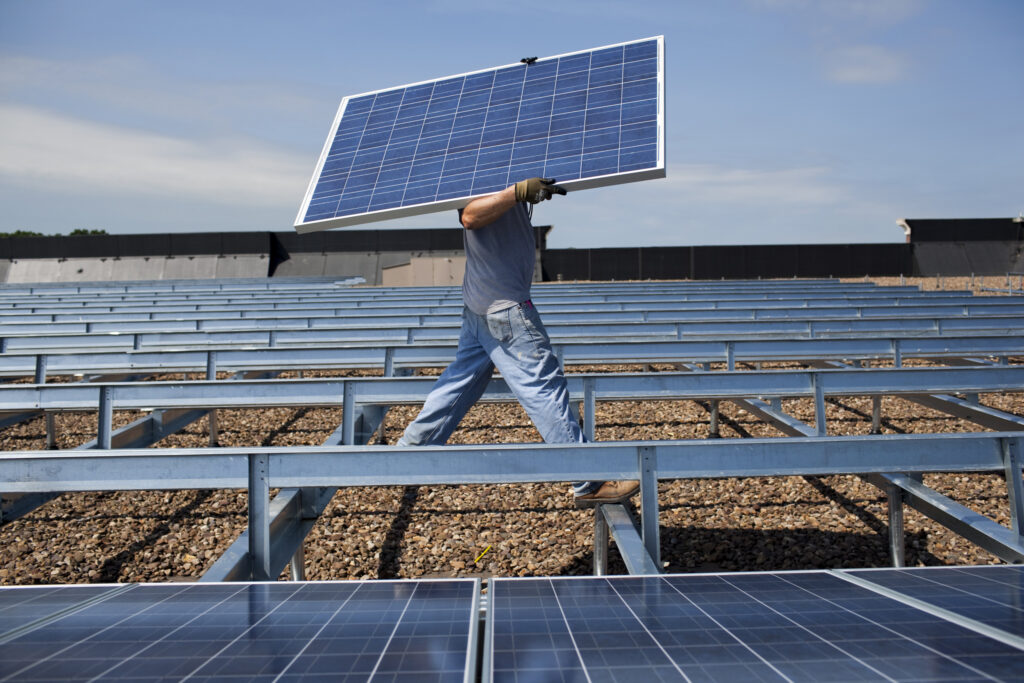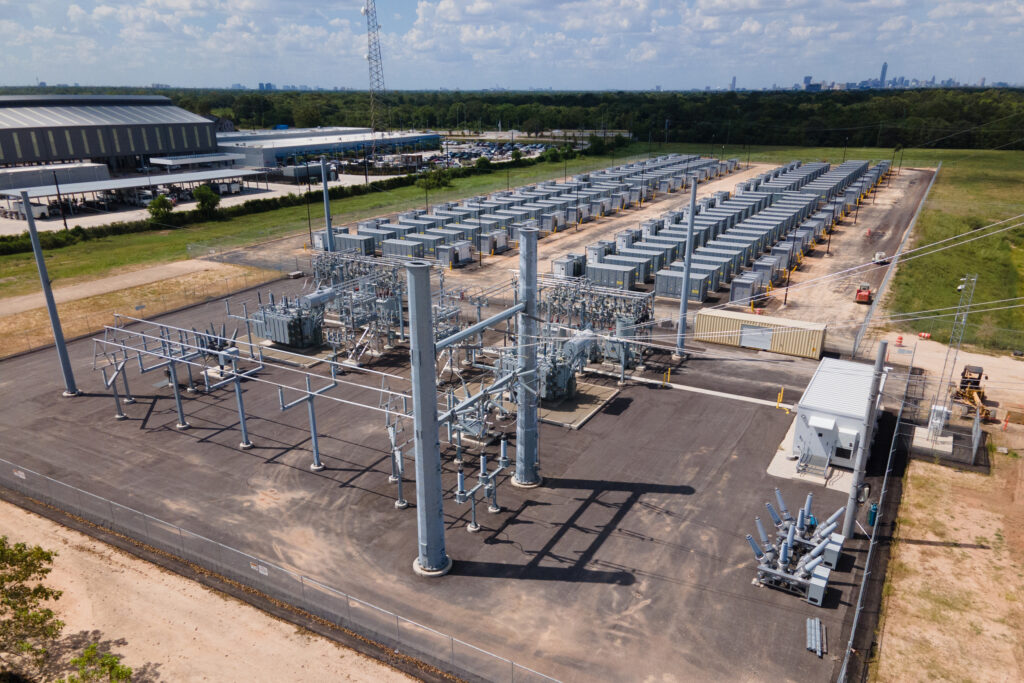One of the objections to utility-scale solar power that I hear most often is that local communities will be left to cover the costs of cleanup at the end of a project’s life.
But state and local rules in nearly all of the country are clear about who pays: The developer or the owner is responsible for restoring the land once a project is no longer operating.
The problems arise from the complexity of the regulations in many places, which provide opportunities for people who oppose solar and are looking for concerns that will resonate with the public.
A new report from NC Clean Energy Technology Center, “50 States of Solar Decommissioning,” offers a comprehensive review.
“Why is this important?” asked Justin Lindemann, a policy analyst for the center, based at North Carolina State University. “With the number of solar projects that are in the queue right now, being planned by utilities and various third parties across the country, it’s important to prepare for the eventual end-of-life management that all of these projects will have to go through at some point.”
We’re hiring!
Please take a look at the new openings in our newsroom.
See jobs
Solar farms are built to last about 30 years, so a project built today should still be going into the 2050s. And, since the vast majority of the country’s solar power was built in the last five years, we have many examples of recent projects and almost no examples of what happens at the end of their lives.
Decommissioning a solar farm involves removing the panels, racks, wires and other equipment and taking actions to restore the ground to its previous state. The company doing the removal will sell much of the scrap to recyclers. One part of the solar farm that may remain is the posts that were placed several feet below ground to hold the racks. Whether the posts stay or go is usually specified in the teardown plan. (The American Clean Power Association created a fact sheet and the National Renewable Energy Laboratory published a 2021 report containing more information.)
When the cleanup is done, the land can be used for agriculture, if that was its previous use, or it can host some other development, including a new solar farm.
As I read the North Carolina center’s report, one dynamic I paid attention to was whether states started with local regulations and later added rules at the state level, or vice versa. Partisan differences give hints of whether the people proposing new rules want to help or hinder solar development, with Democrats often trying to simplify and help development and Republicans often—although not always—trying to do the opposite.
Regardless of the political factors at play, I see broad agreement that there should be regulations to make sure developers cover the costs of decommissioning their projects. The debate is over the details.
In most places, developers must submit a plan for removal of the projects and take steps to guarantee that local communities will have minimal, if any, costs. Sometimes this involves an insurance contract or some other financial arrangement that will pay out the cost of decommissioning if the developer or its successor doesn’t meet its obligations.
“There is sort of a failsafe provided so that a company can’t just build something and then go bankrupt, and then leave all of that facility to the communities to deal with,” Lindemann said.
Some recent actions:
- Arizona Gov. Katie Hobbs, a Democrat, vetoed a bill in June that would have imposed statewide standards for solar and wind development, including requirements that developers post a financial guarantee to cover decommissioning costs. She said the bill would have had a “chilling effect on renewable energy development in Arizona.” Clean energy groups and environmental advocates opposed the bill, saying it was too restrictive at a time when county governments already have the authority to implement rules.
- Michigan Gov. Gretchen Whitmer, a Democrat, signed a bill in November that allows solar development on land whose owners are participating in an existing program designed to preserve farmland. The owners are required to show that they are financially able to pay to remove the solar panels and return the site to agricultural use at the end of the project’s life.
- North Carolina now has a statewide policy on solar decommissioning because of a bill the Republican-controlled legislature passed. Gov. Roy Cooper, a Democrat, chose to let the bill become law in June, which happened automatically because he did not sign or veto it. The bill covers new and existing utility-scale projects, requiring the owners to file decommissioning plans and then update the plans every five years. The owner must provide proof of ability to pay for removal of a project at the end of its life.
As of the end of 2023, 20 states (including Texas) had statewide policies, and nine states (including California) had a hybrid of state and local rules.

Two states are in categories of their own: Washington has a law for solar decommissioning, but local governments can decide whether they want to follow it or not. Massachusetts has a template for solar decommissioning rules that local governments have the option to adopt.
The remaining states, including Arizona, have rules overseen by local governments. In some places, this may mean no rules.
Just because a state or local government has rules for how to handle decommissioning solar projects doesn’t take the issue off the table for opponents.
I saw this in reporting about the proposed Birch Solar project near Lima, Ohio, in 2022. One of the main concerns opponents raised was that the decommissioning plan, which the state required, was not adequate.
But when I looked at the plan filed by the developer, Lightsource BP, I didn’t understand why so many people considered it to be lacking. The 19-page document spelled out how the developer would remove all components of the project and how the company would pay a projected cost of about $15 million.
In response to objections, Lightsource BP said it would redo the plan. The company agreed to make changes, including a commitment to remove a majority of the solar farm’s equipment within one year of when it stops operating.
Even with these additional steps, some of the main groups opposing the project were unmoved. State regulators rejected the application, citing the local opposition, including a lack of support from local governments.
In this case, all the talk about submitting a workable plan led to a result that could be summarized with a shrug emoji.
But it’s important that the specifics from some local debates not distract from the importance of developers having end-of-life plans for projects. Regardless of whether the rules come from state or local governments, they need to exist.
Other stories about the energy transition to take note of this week:
Tesla Warns of Reduction in Sales Growth in 2024: Tesla says its sales growth rate will be down this year because the company is in between two growth waves, as Akash Sriram, Hyun Joo Jin and Abhirup Ro report for Reuters. The previous wave was related to the release of the Model 3 and Model Y, and the next one will be related to the release of models on the company’s upcoming EV platform. Reuters also reported that Tesla has told suppliers it intends to begin selling a new mass-market crossover in 2025, code-named “Redwood.” Tesla needs to expand its lineup to respond to competition from companies such as BYD, based in China, which became the world’s top producer of EVs in 2023.
Ford Reduces F-150 Lightning Production, Citing Slow Growth in Demand: Ford is slowing down its manufacturing of the all-electric F-150 Lightning, which the company says is a response to sluggish growth in sales, as Michael Wayland reports for CNBC. Starting in April, the automaker will have only one shift of workers making the truck at the Rouge Electric Vehicle Center in Michigan, a reduction from the current two shifts. The affected workers will be able to transfer to other plants in the area, and some can take buyouts. Sales of the Lightning rose 55 percent in 2023 to more than 24,000 vehicles, but Ford has been producing the model at a higher rate than it has been selling, leading to an imbalance the company is trying to fix. The Lightning is a high-profile vehicle and crucial for Ford’s EV strategy, so a slowdown in production doesn’t bode well in the short term. We’ll see how it does in the long term.
This story is funded by readers like you.
Our nonprofit newsroom provides award-winning climate coverage free of charge and advertising. We rely on donations from readers like you to keep going. Please donate now to support our work.
Donate Now
Toyota’s Chairman Says EV Market Share Will Go No Higher than 30 Percent: Toyota Chairman Akio Toyoda told workers he believes all-electric vehicles will soon hit an unofficial market share cap of 30 percent, with the rest being taken up by hybrids or models that run on gasoline or hydrogen. His comments, reported by Nicholas Takahashi of Bloomberg, are a head-scratcher because it’s not clear if he is looking at internal estimates or just speculating. Toyota has been slow to ramp up its all-electric lineup and is among the most conservative of the major automakers in its commitment to EVs, as Rob Stumpf writes for InsideEVs. Global market share for EVs is already more than 15 percent, and it is rising quickly, so if I was betting, I’d say the number is going to blow past 30 percent in just a few years.
Washington State Is Leaving Tribal Cultural Resources at the Mercy of Solar Developers: Avangrid, a large renewable energy developer, omitted key details about Indigenous cultural sites from reports it submitted in Washington to build a solar farm on the land that contains the sites, as B. “Toastie” Oaster reports for High Country News. A state official discovered the omissions and asked the developer to resubmit the report, leading to backlash against the official from people who wanted to see the project go forward. Oaster cites examples that show this is not an isolated incident, and that developer-funded archaeologists are sometimes not thorough in assessing an area so that they can ease the path for development.
To Slash Carbon Emissions, Colleges Are Digging Really Deep: Princeton University is one of a growing number of colleges and universities that are testing or installing geothermal systems to heat and cool buildings. The systems, which use a system of underground pipes to capture the earth’s heat, are part of a broader effort to reduce the burning of fossil fuels on campuses, as Cara Buckley reports for The New York Times.
Inside Clean Energy is ICN’s weekly bulletin of news and analysis about the energy transition. Send news tips and questions to [email protected].


















